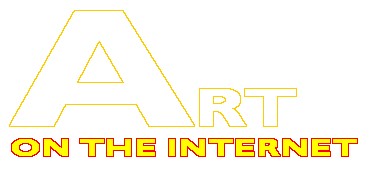
 |
||||

A brief guide of web page design practice.
by C. Hobson
Other items received by the designer are: ideas as verbal instruction and sketches, pieces of rough art, writing, photographs, and tangible items for the scanner. CONCEPT: The designer is influenced by his experience, state of mind, and surroundings. He does not limit the development of a design to when he is in the studio or to an eight hour day. Concepts are conceived at varying times under varying circumstances. Concepts are applied, refined, reviewed, then rejected or accepted. This practice continues until the design is completed. Art may be created using traditional methods then scanned for the computer. Digital art is created. Other design elements are gathered by the designer. Writing the script begins. The designer brings all elements of the design together to create the visual Web Site. Peer review, not always welcome, is important. The design will change as it is developed, and all writing requires editing. A good designer allows critique and learns from it. His design will improve because of it. Review with the client is a necessity. Review, review, and review once more. The technical skills of the designer allow the concept to be realized. The designer must know the limitations of the media in which he works and be willing to learn new styles and methods as they are developed. NAVIGATION: MANAGEMENT: The Web Site files must be uploaded to and downloaded from the internet service provider (ISP). Proper file naming is crucial to a working Web Site. The client may wish to change one of many pages, or redo the project. Site management services are provided to the client from the design site. But there is no glory in filing or creating a reliable and accessible archive. A top notch designer takes care to protect the client's site and the property of his company. Overused or unrelated graphic elements are negatives. A page can be cluttered and difficult to read. The first page may be encumbered by large graphic elements and take a long time to download, losing the viewer. Navigation between and on pages may be poorly designed. An inept Web Site will not be appreciated by the viewer and quickly passed over and forgotten. The design objectives have failed. The design objectives have been met. The Web Site is a success.
CONTENT:
A Web Site project is given to the designer in a general outline. The objectives and theme of the site, and preferences of the viewers are important considerations.
The designer begins the conceptual design as a series of mental pictures. A design is not one concept, but many concepts brought together to make one. The ideas are purely subjective. However, usable concepts are founded in good design practice and in the declaration of content that began the project.
EXECUTION:
Execution of the design begins when the designer sits down at his computer. Conceptual design becomes a reality.
CHANGE:
The design is constantly changing. The ideal is never realized. Discoveries are made. Compromises to satisfy operating systems and browsers are realities. The designer will constantly review his work and incorporate changes that improve the design. He will reject changes that don't improve the design.
TECHNICAL:
The designer must know basic html, perl, and other languages and be good at using key applications. Applications are like languages; a designer must be fluent in several and knowledgeable in many others.
ARCHITECTURE:
There is much work done by the designer of which the client is not aware. A Web Site design must play well on two operating systems and several browsers, even different versions of the same browser. Forms never display the same on two or more browsers. The visual web site, CGI scripts, templates, and other documents are designed, loaded onto the ISP server and test run.
Is navigation between pages, and links between web sites, intuitive? A good design makes it easy for the viewer to find the information he wants, and the information the designer wants him to view, very critical elements in site creation.
Site management is important. Any problems with viewing the Web Site must be resolved. Revisions to the site will be required over time.
ORGANIZATION:
Organization is the least appreciated discipline to be applied by the designer. His product is valuable to the client and to the company he works for. The client expects that his Web Site will be protected.
FAILURE:
In design, form always follows function. There is no art for art's sake. Every element on a Web Site page has a purpose. Graphics and words are related.
SUCCESS:
A well designed Web Site invites the viewer to experience the site. It will be a pleasant visit, informative, and easy to navigate. The art will provoke emotion, and the text a response.
END - Page 1 of 1

![]()
![]()
Copy text, paste it into your own page, print a reference copy, and start a collection of Threshold articles. It makes writing your reply a cinch.